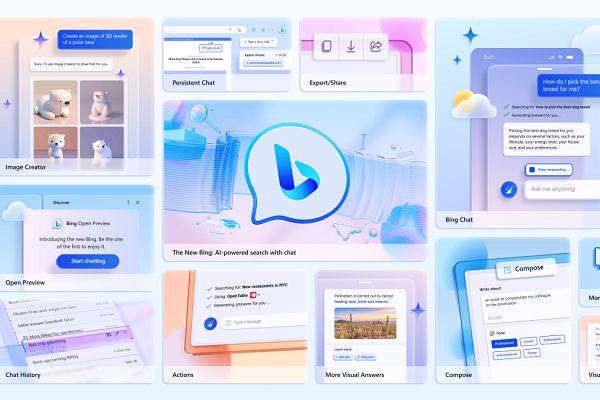Microsoft Bing AI Chat Ends Waitlist, Previews Visual Search and Third-Party Plug-Ins
Microsoft closed the Bing AI waitlist and teased plans for the generative AI chatbot this week. The now universally available Bing already sees more than 100 million daily active users, accumulating more than 500 million chat sessions since February, according to Microsoft. The AI will soon include more visuals in its responses and offer third-party features as Microsoft deploys a series of upgrades.
Bing Generative
Bing and its generative conversational AI no longer require a wait to use, but the chatbot is technically still in previews and only available on the Edge desktop and mobile browser and the Bing mobile app. Nonetheless, Bing AI will leverage the OpenAI GPT-4 model it uses for several new abilities in the coming months. For instance, Bing is working on widening its multi-modal and visual communications. The AI chatbot will soon begin responding to questions with more pictures, charts, and other visuals, leading to an understanding of how to use images uploaded by a user in its searches. This is building on the inclusion of the Bing Image Creator text-to-image engine in the chatbot in March. Microsoft is also augmenting the Image Creator to process prompts in all of the more than 100 languages Bing uses.
“Bing has always been known for its visual experiences including features like Knowledge Cards and visual search. And now we’re delivering those same experiences in chat,” Microsoft consumer chief marketing officer Yusuf Mehdi explained in a blog post. “[W]e’re expanding what’s possible with multi-modal capabilities and are beginning the work to incorporate visual search in chat so you will be able to upload images and search the web for related content.”
Bing will also soon start saving previous chats, similar to ChatGPT, but including the ability to share and export the chat in a single file. Microsoft is also planning to deepen and personalize a user’s talks with Bing by enabling the AI to reference and use as context earlier interactions when a user opens a new conversation. The biggest change to Bing may be in how it takes a cue from OpenAI by implementing third-party plug-ins, making it a platform for other developers to engage with.
“We’ll soon build third-party plug-ins into the Bing chat experience creating a platform for developers. For example, if you’re researching the latest restaurant for dinner in Bing chat, it will leverage OpenTable to help you find and book a reservation. Or, with Wolfram|Alpha, you can create powerful visualizations and get answers to complex science, math and human-curated data-based questions directly from Bing chat,” Mehdi wrote. “We are working with our partners at OpenAI to make it easier and as consistent as possible for developers to take advantage of this opportunity. We believe these types of skills are a game-changer in the reinvention of search and to advance opportunities for developers in search.”
Follow @voicebotaiFollow @erichschwartz
Microsoft Starts Adding Bing Generative AI Chatbot to Swiftkey Android App
New ChatGPT Plugins Link Present-Day Internet and Third-Party Apps to Generative AI Chatbot









